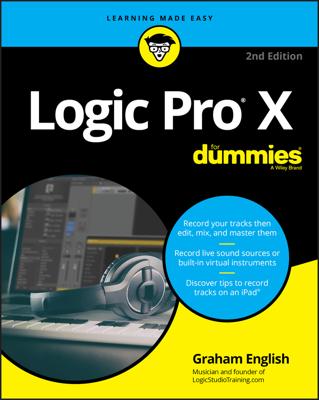Sound mixing is the key to achieving a cohesive listening experience. Discover ten studio secrets to help you mix and produce great sounding tracks in Logic Pro X.
Mix after the recording is complete. It's easy to get sucked into getting the perfect sound every time you open Logic Pro X, but it's easier to mix your project after you've completed writing and recording it. You don't need to have a rigid dividing line between writing, recording, and mixing, but you might as well wait for the tracks to be recorded before you try to mix a well-balanced sound.
Listen to reference audio. Make a playlist of your favorite sounding mixes as well as mixes that are competitive in your marketplace or relevant to the project. Listen to these mixes periodically to see how your mix compares and to double-check that you're moving in the right direction. Your reference audio should be in a lossless format, not mp3.
Plan the mix before you record. Know how the tracks should be balanced before you record them. If you record your tracks at the same general level that they should be in the mix, your mixing job will be even easier. You'll probably find yourself recording at lower levels if you plan your mix this way.
Check your mix at multiple volume levels. You can do the bulk of your mixing at low volume, which helps you focus on the midrange and can make it easier to get a good balance. Mixing at low volumes is also easier on the ears.
When you need to mix bass instruments or EQ bass frequencies, you should raise the level to a moderate volume. Your perception of frequency has a curve that's more extreme at a low volume and flatter at a moderate to high volume. Raising the volume balances the frequency spectrum so you can apply EQ and hear its affects accurately. You'll also benefit from checking your mix on multiple devices, such as laptop speakers, iPod earbuds, and car stereos.
Take advantage of the stereo spectrum to separate instruments and prevent masking. Masking occurs when sounds stack on top of each other. The effect is like taking a photograph of two people, but one is standing in front of the other so you can see only one person in the photo. If you were to stand the two people side by side, you could see both.
You can achieve a similar effect with your audio by using the entire available stereo spectrum to arrange and present your tracks.
Cut frequencies before you boost frequencies. Boosting frequencies changes the sound in addition to the balance and can cause unwanted phase shift. If you feel like you want a different sound, boost the frequencies. But if you want a track to cut through the mix, either cut the frequencies of other tracks that are masking the track or cut frequencies that are causing the sound to be fuzzy and unclear. Often, reducing bass frequencies (up to 250 Hz) can clean up a muffled sound.
Create three distinct depths in your mix: close, near, and far. Your listener can perceive only two or three levels of depth. Bring elements of your mix closer to the listener by keeping them dry, with no reverb. Move things away and make them large by adding reverb and delay. A short and long reverb can provide all the depth you need.
Use reverbs as effects. Reverbs can do more than recreate acoustic spaces. For example, a gated reverb could be considered an effect and not a recreation of an acoustic space. The Space Designer reverb plug-in includes many gated reverb presets and other weird and warped effects.
Simplify your compressor settings. The Logic Pro Compressor has two knobs, Attack and Release. Forget about the knob's full range and just use the extremes to try out different sounds.
Use these four distinct Attack/Release settings: Fast/Fast, Slow/Slow, Fast/Slow, and Slow/Fast. Use the Ratio and Threshold settings to adjust the level of the compression, but use Attack and Release to define the sound. The Circuit Type further affects the sound and can give you transparent compression or colored and even distorted tones.
Give one element the focus. Busy or sparse, your mix should have one element that's the center focus. The focus can be a group of tracks, such as percussion or even the full rhythm section, but most often it's a lead instrument such as vocals or instrumental melodies.

